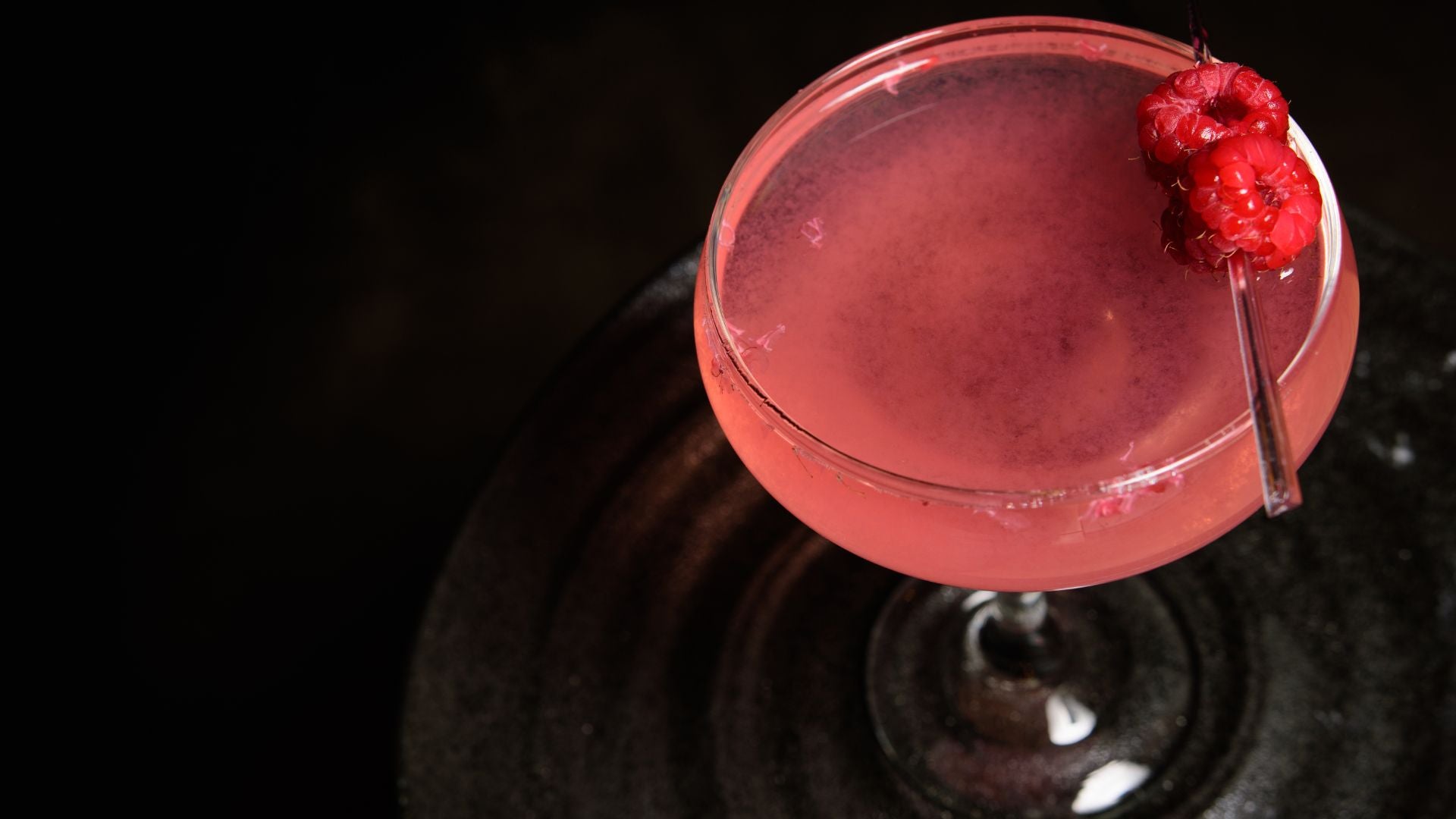Cocktails and Pink Vodka
September 07, 2022
Before It Was Pink Vodka, It Was Vodka
Vodka has a history that dates back as early as the ninth century. In the United States, the spirit wasn't introduced until the 1930s, and its popularity has grown from there. From its beginning, the opportunity to add flavoring through herbs and fruits, as well as the ability to mix vodka with other beverages, has compelled the need to be creative.
It all starts with a strong vodka base, though, which is what you get with Pink Kitty from 2XL Swagger. Pink Kitty is a premium brand of pink vodka-based liqueur with a hint of pomegranate and peach. Its refreshing taste blends well with a variety of options.
A Brief History of Vodka
Vodka has its roots in Eastern Europe. Voda, which translates to water in Russian, is where the word vodka first appeared. Vodka's first documented production was towards the end of the ninth century. The first distillery is thought to have been established in the year 1174.
Over the years, Poland has asserted that they were the first to distill vodka, dating back to the eighth century. However, as this was a distillation of a beverage that was more like wine than vodka, Russia continues to hold this distinction. According to history, the 11th century saw the arrival of the first recognizable Polish vodka.
Vodka became the national beverage of Russia in the fourteenth century. In the 16th century, it became the national beverage of Poland and Finland. It had many other uses, though, as both it and other distilled spirits were used as medication. Additionally, it was used in the process of making gunpowder.
Russia has developed various different vodkas over the years. Early industrial processes were primitive. Impurities were frequently found in the creations. At that time, distillers added fruit, herbs, or spices to their beverages, hoping the flavors would mask any hint of impurities. In today's production, there are no issues with impurities, but companies still create their own handcrafted blends. For instance, pink vodka still utilizes a blend of herbs and fruit in its recipe to achieve its invigorating taste.
Large-scale vodka manufacturing started around 1450. In order to profit from vodka's popularity, Russians started selling it to Sweden in 1505. Again, Poland followed suit and began exporting vodka in 1505.
The right to own a distillery was elevated to noble status in 1716. There were numerous varieties of aromatized vodka produced throughout the next 50 years, but none of these varieties expanded on the primary recipe. Instead, distillers experimented with everything, from acorns to cherries to watermelons, to accent that base recipe.
The distillation process was divided into many phases. In a typical production method, alcohol was distilled twice, then diluted with milk before being distilled a third time. This time, water was added to bring the alcohol's strength up to the desired level, and flavoring was added before the final distillation. This all changed when a scholar in St. Petersburg devised a way to purify alcohol using charcoal filtration in the 18th century.
Vodka and Politics
Vodka's popularity grew as more people heard about it, which in turn raised demand. Lower quality items, frequently made with distilled potato mash, were manufactured since the supply could not keep up with the demand.
Between 1860 and 1890, earlier production-control initiatives aimed to reduce the number of distilleries from 5,000 to 2,050. These attempts were unsuccessful until a new statute was passed in 1894. When this statute passed, vodka production and distribution in Russia became a state monopoly.
All state distilleries established a standardized production method with a quality guarantee at the end of the 19th century. During this time, the name vodka received official recognition.
Following the Russian Revolution, Moscow's private distilleries were seized. As a result, many vodka producers left, taking their expertise with them. This caused new partnerships, and in 1934, vodka arrived in the United States.
The Art of Making Pink Vodka
There are a variety of ingredients used to make pink vodka. It is regarded as a neutral spirit if it contains at least 96% alcohol by volume (ABV). It is either redistilled to create a pure and flavorless spirit or filtered through activated charcoal. This helps to get rid of any lingering impurities.
The spirit may frequently undergo one or two more distillations before being combined with clean demineralized water. Prior to charcoal filtering, the method decreases the alcohol by volume to roughly 55%.
Vodka's finished product is not legally required to have anything else added to it. Some producers add ingredients to enhance the qualities, or they flavor the pink vodka by letting fruits or herbs steep in it for several days. No maturation time is needed for vodka.
In the West, the popularity of vodka didn't rise until the 1960s and 1970s. More brands were introduced during this time in both the UK and the US. This time saw a shift toward a more laid-back way of life with a focus on exploration and experimentation. Vodka's popularity grew as a result of its neutral flavor and versatility when combined with other drinks. Nowadays, the variety of pink vodka-based drinks is a cocktail combination that rivals none.
What Makes Pink Vodka?
Pink Kitty is a blend of pomegranate, peach, and a variety of herbs. The seductive pink vodka liqueur offers a refreshing taste, but it is the herbs in the recipe that provide the opportunity to relax, let your guard down, and indulge in a feeling of sexual freedom. The aphrodisiac feeling comes from the unique recipe that is one of a kind. To understand the ingredients a bit more, let's take a look at what makes pink vodka the choice for you.
Pink vodka uses a blend of herbs, including Avena Sativa. This herb is grown worldwide and is thought to decrease anxiety and stress. It is commonly used as a supplement and derives from oats. Oats are vital for health as they are known to lower cholesterol, provide health benefits for your heart, and may even assist in weight reduction. The benefits are wide and varied.
In addition to Avena Sativa, pink vodka uses the herb damiana. For centuries, this aphrodisiac herb has been used for herbal remedies. The plant thrives in sub-tropical climates and is thought to increase sexual health in the realm of both fertility and sexual intimacy. While there is a lack of scientific evidence to back claims regarding herbs and benefits, they have been used for years, and many people feel their benefits have been vital to their success and well-being.
Maca is another plant that has been used for years as an herbal remedy. Recently, like damiana, its positive effect on our sex drive has piqued the interest of researchers. Maca might not be what you think of when you think of herbs. Maca is actually a vegetable. Its root is what is valuable to herbalists. The root is ground into powder and can be added to a variety of concoctions, including pink vodka. Understanding the ingredients behind this aphrodisiac liqueur certainly makes it tempting to try.
What Cocktail Combinations Can You Make With Pink Vodka?
There are a few recipes on the 2XL Swagger website to try, including the one below. As a company that enjoys creativity and uniqueness, we encourage you to create your own cocktail blend with both our PinkKitty, pink vodka-based liqueur, and Easy Rhino. You can keep it clean and simple, mixing our brand with another favorite drink, or mix things up when you're feeling spicy.
THE TIGRESS
INGREDIENTS
- 1.5 oz. Pink Kitty Liqueur
- 5 oz. ginger beer (we use Main Root Spicy Ginger Brew)
- Fresh Lime Juice
DIRECTIONS: Pour Ingredients along with some ice in a cocktail glass, and garnish it with lime and fresh mint.
If creativity isn't in your wheelhouse, that's okay! Continue reading for more options on your way to creating the perfect aphrodisiac cocktail with pink vodka.
Soda Water: Soda water is a classic beverage to mix with pink vodka. Consider adding lemon or lime to its refreshing blend of pomegranate and peach. Whether you do or don't, you're in for a treat with this seductive pink vodka soda water combo.
Lime Juice and Simple Syrup: Speaking of lime, you can add it and simple syrup to pink vodka with a bit of crushed ice for an exhilarating night cap with your favorite someone.
Cranberry Juice: The duo of pomegranate and peach is a fantastic combination. Imagine adding cranberry juice! Cranberries are full of antioxidants, decreasing inflammation and providing a variety of health benefits.
These are just three options to get your bartending skills up and going. You're sure to create more as you enjoy getting to know pink vodka.
Pink Vodka - Enjoy All it Has to Offer!
Vodka has been a drink of choice for centuries, with roots in Russia. Modern-day vodka continues to increase in popularity thanks in part to the ability to combine it with a variety of beverages. Adding PinkKitty pink vodka-based liqueur by 2XL Swagger to your aphrodisiac liqueur options allows you to create your own cocktails, decrease your sexual inhibitions, and enjoy all life has to offer.





